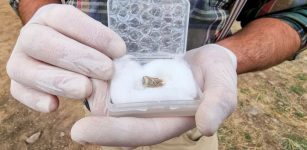On This Day In History: The U.K.’s First Murder Case Solved By A Fingerprint – On March 27, 1905
AncientPages.com - The brutal crime was solved on March 27, 1905, using the newly developed fingerprinting technique.
Fingerprint evidence from the cash box of a murder scene in South London, England, led to the killer's arrest.
A court artists drawing of the brothers Albert and Alfred Stratton. Credits: Capital Punishment.UK
The neighbors of Thomas and Ann Farrow, shopkeepers in South London, discover their badly bludgeoned bodies in their homes. Thomas was already dead, but Ann was still breathing. She died four days later without ever having regained consciousness.
The Farrow case was the first time cutting-edge technology was used in a high-profile murder case.
Since the cash box in which the Farrows stored their cash receipts was empty, it was clear to Scotland Yard investigators that robbery was the motive for the crime.
One print on the box did not match the victims or any of the still-tiny files of criminal tracks that Scotland Yard possessed. Fortunately, a local milkman reported seeing two young men near the Farrow house on the day of the murders. Soon identified as brothers Alfred and Albert Stratton, the police interviewed their friends.
Alfred's girlfriend told police that he had given away his coat the day and changed the color of his shoes the day after the murders. A week later, authorities finally caught up with the Stratton brothers and fingerprinted them. Alfred's right thumb perfectly matched Farrow's cash box print.
The fingerprint evidence became the prosecution's only solid evidence when the milkman could not identify the Strattons positively. The defense put up expert Dr. John Garson to attack the reliability of the fingerprint evidence. The prosecution relied on evidence that Garson had written to both, the defense and prosecution on the same day, offering his services.
The Stratton brothers, obviously not helped by the discrediting of Garson, were convicted and hanged on May 23, 1905. Since then, fingerprint evidence has become commonplace in criminal trials, and defense attorneys even use the lack of it.
AncientPages.com
Expand for referencesReferences:





















